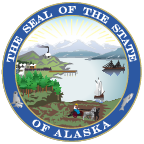Revenue Forecast: Fall 2021
The Honorable Mike Dunleavy
Governor
State of Alaska
P.O. Box 110001
Juneau, Alaska
99811-0001
Dear Governor Dunleavy,
I am presenting to you the Department of Revenue’s Fall 2021 Revenue Sources Book. This publication provides a history and projection of state revenues and is a collaborative effort among the Department of Revenue and several other state agencies.
Compared to the Spring 2021 forecast, the Alaska North Slope oil price forecast has increased by $14.72 per barrel for fiscal year (FY) 2022 and $9.00 per barrel for FY 2023. The Alaska North Slope oil production forecast has increased by 27,100 barrels per day for FY 2022 and 23,600 barrels per day for FY 2023. Driven by this improved outlook for oil price and production, the Unrestricted General Fund (UGF) revenue forecast has increased by $1.0 billion for FY 2022 and $0.8 billion for FY 2023.
UGF revenue, before accounting for the transfer from the Permanent Fund Earnings Reserve, is forecast to be $2.7 billion in FY 2022 and $2.6 billion in FY 2023.
The Permanent Fund is expected to transfer $3.1 billion to the general fund in FY 2022 and $3.4 billion in FY2023. These amounts include funds that are available for general government spending and payment of dividends. With continued growth of the fund, the Permanent Fund transfer remains the state’s largest source of UGF revenue, contributing 65% of UGF in FY 2021 and projected to contribute at least 54% in each of the next ten years.
In terms of petroleum revenue, the revenue forecast is based on Alaska North Slope oil prices of $75.72 for FY2022 and $71.00 for FY 2023, stabilizing at $68.00 by FY 2031. The oil price forecast is based on futures market prices through FY 2029, followed by an assumption that prices will increase with inflation thereafter. As the recovery from the COVID-19 pandemic continues, demand has increased faster than supply, leading to five straight quarters of inventory draws and higher prices. Higher prices are expected to help lead to a balance in oil markets in 2022 with prices moderating slightly thereafter.
The Department made a change to how it forecasts long-term oil prices for this forecast. In previous forecasts, the oil price forecast was derived based on two years of futures market projections for Brent crude followed by an assumption that prices would increase with inflation thereafter. Beginning with the Fall 2021 forecast, the oil price forecast utilizes futures market projections for as many years as are available (in this case, through FY 2029)followed by an assumption that prices will increase with inflation thereafter. This change was made in an effort to provide a more accurate projection of oil prices and thus state revenue over the medium and long term.
Meanwhile, Alaska North Slope oil production is expected to average 486,700 barrels per day in FY 2022 and500,200 barrels per day in FY 2023, before climbing to 586,200 barrels per day by FY 2031. For the near-term, we are seeing benefits from a recovery in drilling and investment as well as developments coming online. For the longer-term, the production forecast reflects increased uncertainty around large North Slope projects because of federal litigation and financing limitations (including the reluctance to finance Arctic projects from the major U.S. banks).
This Fall 2021 revenue forecast comes during a continued period of uncertainty regarding COVID-19. Given the uncertainty and unprecedented nature of the COVID-19 pandemic, it remains challenging to make predictions on the stock market, oil prices, future tourist activity, or revenue with certainty. In recognition of this continued uncertainty, the department has developed a plausible scenario upon which to base the fall revenue forecast. Key elements of this forecast scenario are detailed in the executive summary.
Sincerely,

